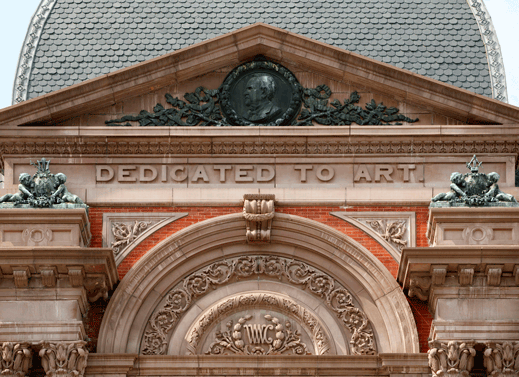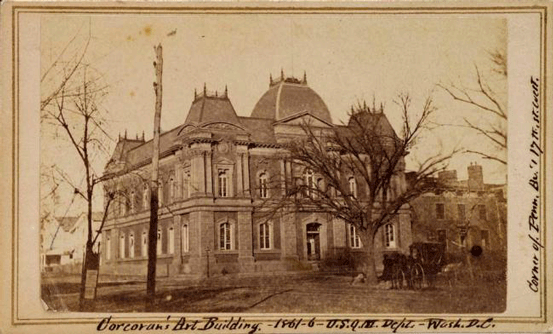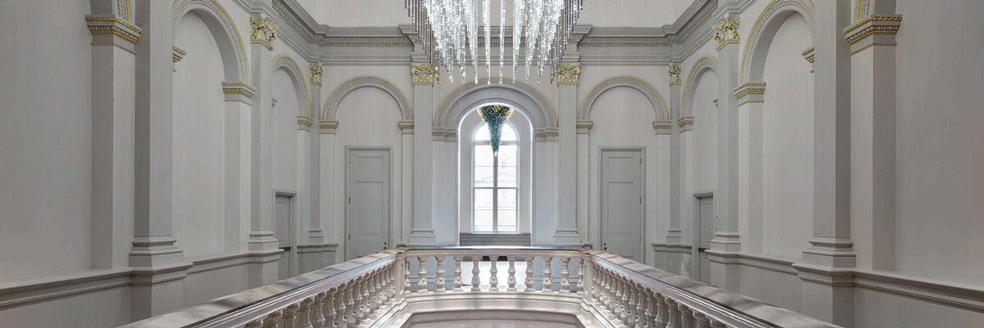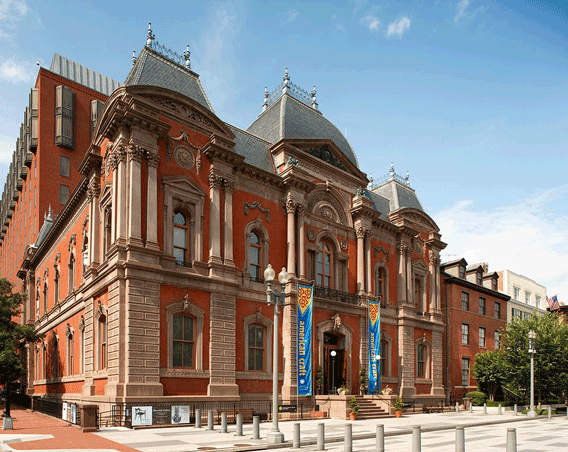“Dedicated to art” is boldly inscribed directly over the front doors of the Renwick Gallery in Washington D.C. Built in 1865 as an art museum, the Renwick Gallery has a long and rich history. Today, it is a symbol of architectural and artistic pride and distinction.
In the early, to mid-19th century William Wilson Corcoran decided to quit his successful career as a businessman. In his years of working in the American banking industry, he noticed that the United States excelled in many areas but lacked a coherent sense of arts and culture. Consequently, he decided to build an art museum (then, the Corcoran Gallery of Art, now the Renwick Gallery) in D.C. The intention was to “encourage American genius.” He hired architect James Renwick to design his museum.

Around 1855, Renwick and Corcoran went to Paris, France. During this period, Parisian architects were developing the Second Empire style, primarily at the Louvre. The French Second Empire Style is highly decorative, its most consistent feature being the mansard roof. According to Wentworth Studios, “Iron cresting on the roof, heavily bracketed cornices, quoins, and balustrades” decorate the ornate buildings. Renwick and Corcoran took note of the building style’s unique features and applied them to their creation. When constructing of the Corcoran Gallery of Art began, spectators referred to the museum as the “American Louvre.”
Renwick completed construction, with the “dedicated to art” transcription and all, in 1871. However, the date and the opening of the museum was on track to happen much earlier. The American Civil War began in April 1861. The gallery, located across from the White House, due to the proximity, was seized for war efforts (storage of supplies for the Union troops). At the end of the war in April 1965, Renwick maintained construction, and the Corcoran Gallery of Art was completed.

Corcoran opened his dream gallery in the 1870s to share his art collection and spread an appreciation of art and culture in D.C. Unfortunately, his passionate endeavour outgrew the original building and needed more space. The museum then turned into a U.S. Court of Claims. Not long after, the structure was abandoned for decades. The years were harsh on the “American Louvre,” turning the exquisite American masterpiece into a dilapidated building in a city that was striving to grow bigger and better.
During the 1950s, the Renwick Gallery was falling apart and far from serving its original purpose. United States President Kennedy signed an order to destroy the building to make room for a newer and more modern structure. Jackie Kennedy, the United States’ first lady, took notice of the order and decided to evaluate the building herself. As a woman with French lineage and a year-long immersion in French culture, she immediately recognized the unique Parisian architecture used for the Renwick Gallery. With great determination, Jackie Kennedy saved the gallery from demolition.

By 1972, the Renwick Gallery was renovated to its original glory and added as a branch of the Smithsonian American Art Museum. The Renwick Gallery is the only art museum in the U.S. named after the architect. Moreover, it was the first building in the U.S. constructed for the intent to be an art museum. When added to the Smithsonian Museums, it was and continues to be dedicated to American crafts and decorative arts.
Today, the gallery features multiple exhibitions year-round. As an American crafts and decorative arts museum, the mediums displayed range from fabrics to glass mosaics and metals. One of the current exhibitions, installed October 16, 2020, to June 27, 2021, is called “Forces of Nature.” It is part of the Renwick invitational program. The show presents the work of artists “Lauren Fensterstock, Timothy Horn, Debora Moore, and Rowland Ricketts.” The artists are asked to use nature to define “what it means to be human in a world increasingly chaotic and divorced from our physical landscape.”

Although the Renwick Gallery went through many transitions and suffered near destruction, it has finally reached its magnificent potential. The COVID-19 pandemic has altered museum experiences drastically; however, the Renwick Gallery remains open and has adapted. Visitors are still allowed inside the gallery but at a limited capacity. They recommend planning your visit first by getting access to the gallery’s map, preparing for a wait time outside the gallery, limiting the number of personal belongings brought (umbrellas, jackets, etc.), and wearing a required mask. Moreover, private museum tours are currently not being offered; however, you can access a recorded version on your phone as you walk around the gallery. Like the Renwick Gallery, much of the world is going through profound transitions. Nevertheless, with generous will, the exquisite structure reached its potential as a home for art.
